Estonia's Media War Against Russia
By Lilly Riddle
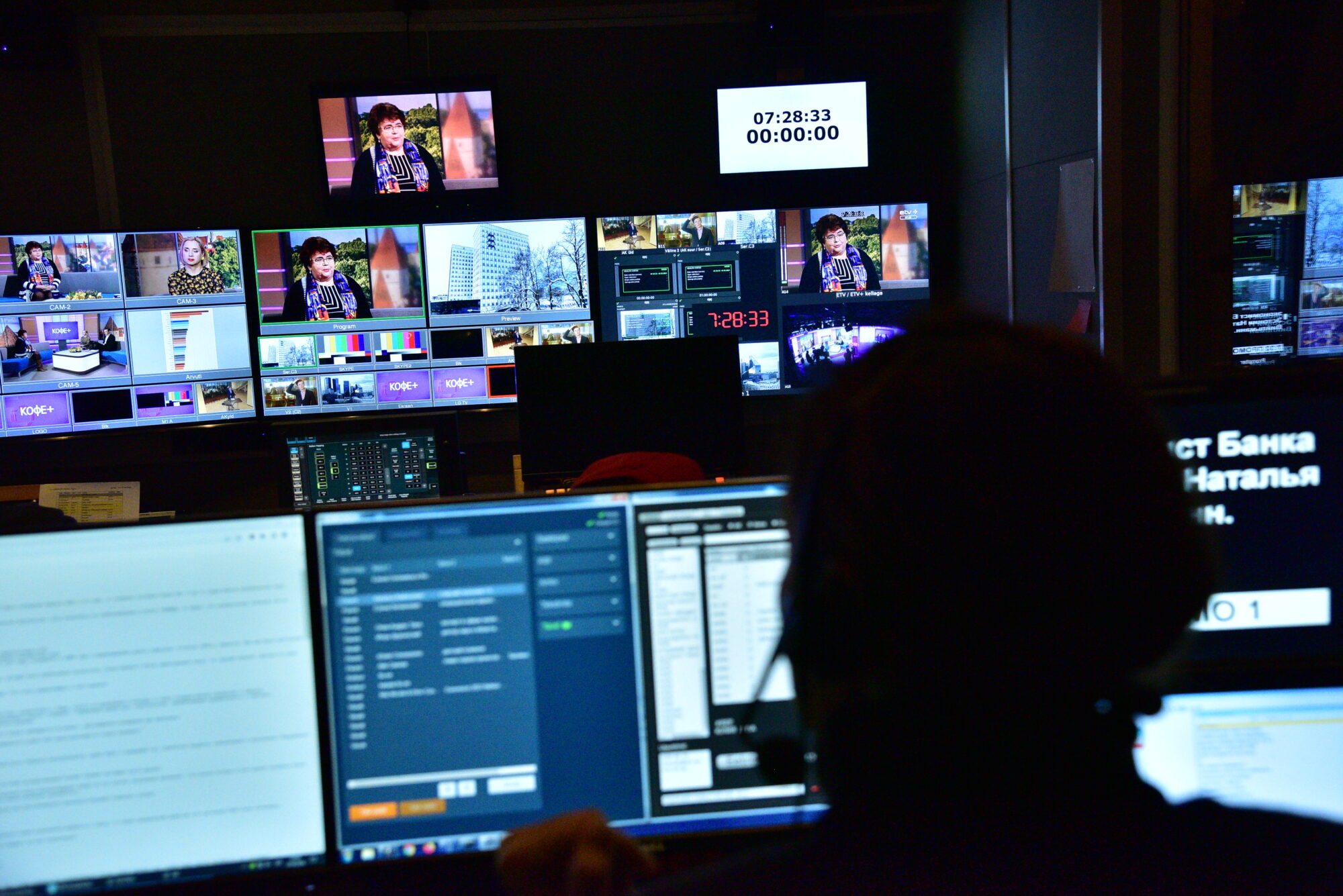
What Vladimir Kharchenko misses most about his hometown is a bar.
Specifically, a bar near his house where he gathered with friends to drink after Putin’s invasion of Ukraine — mourning what it meant for Russia. “They’re fans of Liverpool, they’re fans of Britain,” Kharchenko told me when we met over Zoom in February. “They cannot be against the Western world.”
Shortly after the war began, Kharchenko — a media worker by trade, having contributed to Russian TV stations, glossy magazines and PR companies — read the writing on the wall and left for Tallinn, Estonia. The plan was to lay low for three months before moving on, but he found a job writing news scripts at the Russian-language channel ETV+ and decided to stay.
Kharchenko is one of the lucky ones. It’s nigh impossible for Russian journalists to get a job in Estonia without knowing Estonian, and were it not for his prior familiarity with the country — he visited every year as a child to spend time with his grandparents in Tallinn — the position likely wouldn’t have materialized.
Remaining in Moscow, however, was not an option.
“I couldn’t work. I couldn’t sleep. I couldn’t eat.” Kharchenko said. “When one crazy man wants to restart the USSR? It’s madness.”
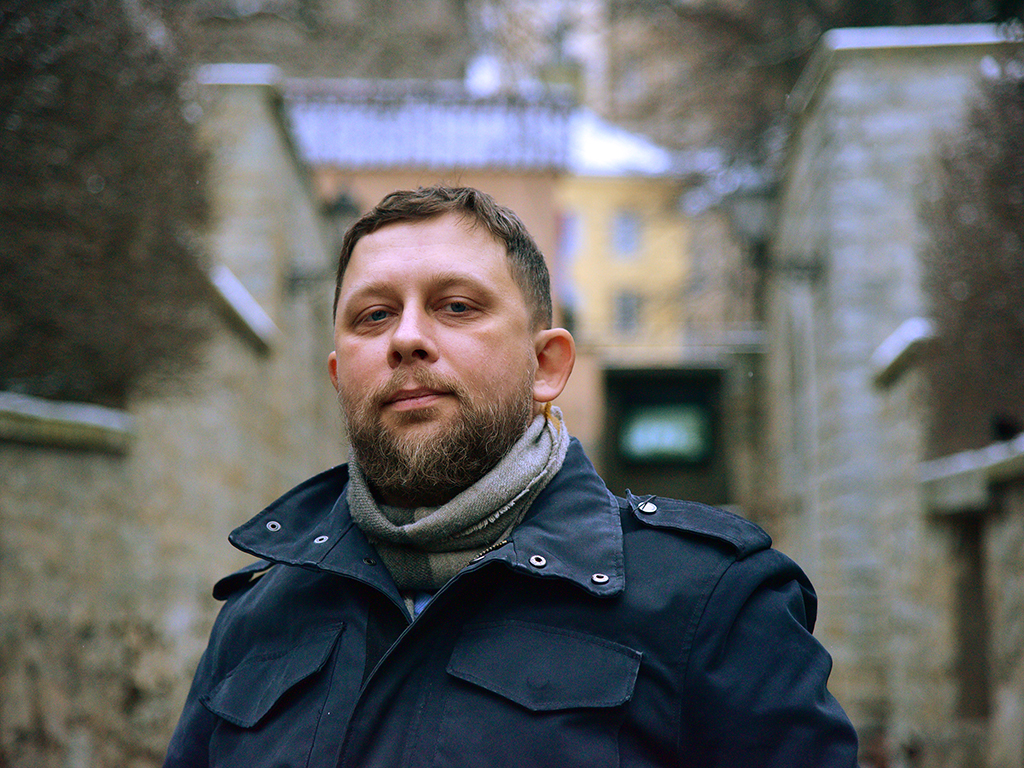
There were “two types of callers” into ETV+ following Putin’s invasion of Ukraine, editor-in-chief Ekaterina Taklaja said: Russophones who disapproved of how guests described the dictator and Estonian natives who said the station didn’t go far enough in denouncing him. Viewers would sometimes notice the Russian flag’s colors on a host’s sweater, or the “Z” shape of a podium — the letter has come to represent pro-Kremlin propaganda — and interpret them as signs of support. “People were very sensitive about all sorts of symbols,” she said.
ETV+, Estonian Public Broadcasting’s state-funded TV channel and one of the country’s two main Russian-language platforms (the other being Raadio 4), is one of several outlets developed in direct response to Putin’s advances. It was launched in 2015, with a hefty budget of 2.5 million euros, in response to his annexation of the Crimean Peninsula.
When I visited the station in March, I was ushered into the waiting room, where two chic hosts took their place on a futon while techs adjusted their mics. Once the show started, I joined two other producers in a flickering control room, watching the female host’s chrome-blond hair swish from side to side on a million screens. Every so often, they’d laugh at something a guest said, their jokes flying high above my English-speaking head.
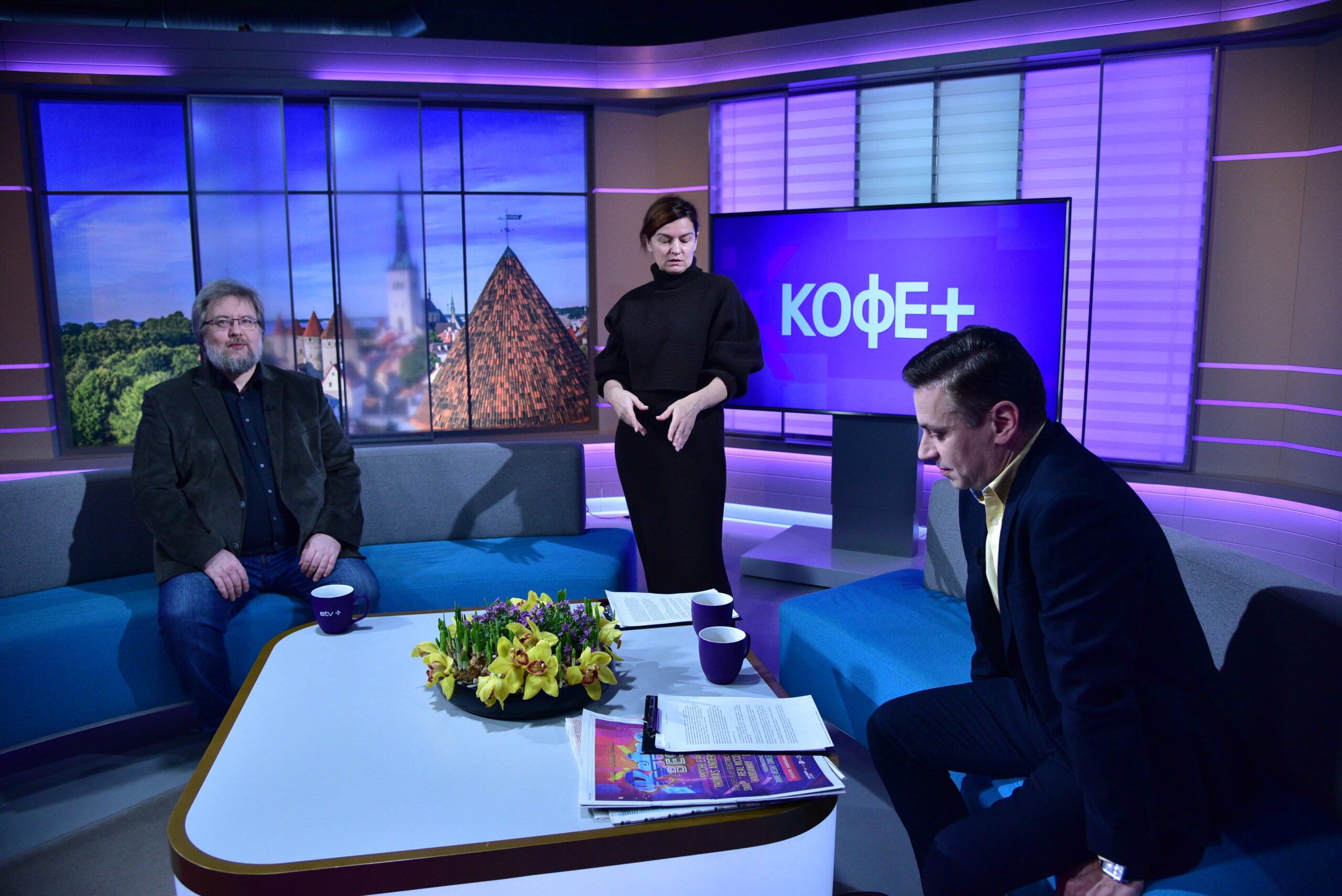
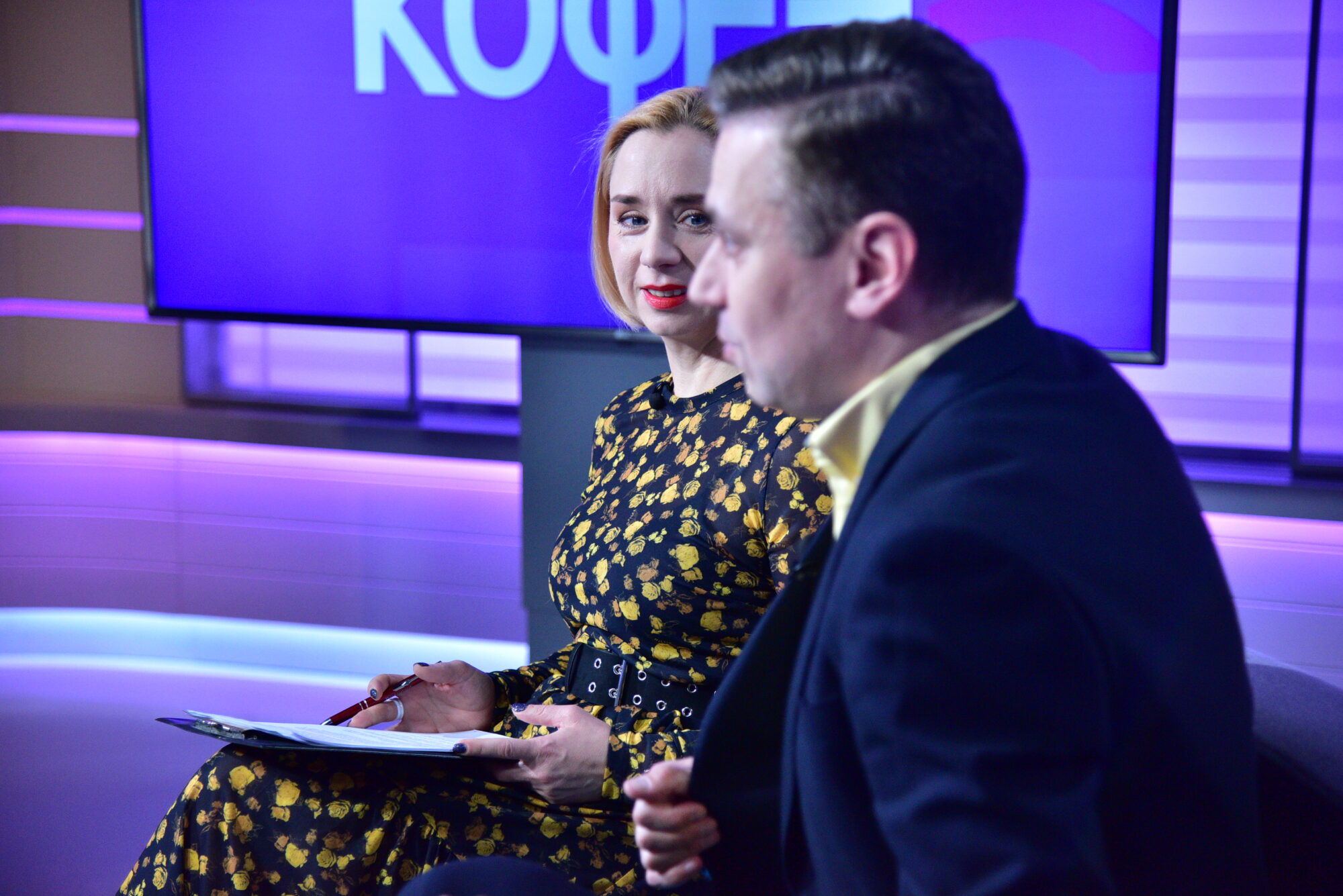
I was surprised to learn — given what Taklaja had told me — that their newscast consisted of conventional, almost milquetoast local stories: economics, grocery stores, tree-planting efforts. Still, Kharchenko said ETV+ covers Ukraine several times a week, serving to inform both Russian-speaking Estonians and an audience of newly-arrived refugees.
“One of the goals of our program is to explain to people how to find their own place in Estonia. Maybe it’s a story about a woman with four children trying to find an apartment for her family … or about Ukrainian refugees who play concerts, or are artists,” he said. “News about the war of course, but also necessary human stories.” Deputy editor Julia Sokol (her surname means “falcon,” she added), said the station aims “to show Russian speakers another part of Estonian life.” The government’s strategy of supporting ETV+ and similar outlets continued into 2022, with state officials dedicating an additional 1 million euros in November toward combating Russian propaganda and providing an entertaining, Western-oriented alternative to state media.
The plan seems to have worked. Estonia’s press freedom score, as measured by the Reporters Without Borders index, places it 4th in the world, up from 15th in 2021. The map displays the northeastern European nation as lime green — bordering crimson Russia, a dismal 155th.
There are several reasons why Estonia’s media ecosystem is so robust, even by American standards (the U.S. was 42nd last year): strong support for freedom of expression, several state-funded outlets, plenty of access to political figures. You would never get the sense, walking the cobbled streets of Tallinn’s Old Town — old women filing out of onion-domed cathedrals, covered trolleys selling hot glög and candied nuts — that propagandists lurk around every corner, waiting to strike.
Still, journalists I spoke with emphasized the need to continue reaching the Russian-speaking minority. They constitute about 25% of the country’s 1.3 million people and skew older, making them less inclined to pick up new media formats or read stories that create cognitive dissonance. And the stakes are certainly high: In February, reporting from the newspaper Eesti Päevaleht (“Estonia Daily”) revealed that Russian oligarchs worked behind the scenes to support EKRE, a nationalist, populist, right-wing party, ahead of 2019’s parliamentary elections. “What happened in the U.S. in 2016 with Trump, they basically tried to do the same to us,” Martin Laine, an investigative journalist who worked on the story, said.
According to Laine, EKRE’s anti-EU sentiments and opposition to granting Ukrainian aid made it attractive to those in Putin’s circle who want Estonia to cozy up to Russia politically, even if one of EKRE’s core policy proposals is mandating that Estonian — not Russian — be taught in schools. “I’d expect [EKRE] to be the strongest voice on this, but they’re really against helping Ukraine and aren’t loud in trying to criticize Russia,” he said. “So that’s quite weird.”
Getting Russian speakers to watch Estonian government-approved outlets — and resist Russian political and rhetorical influence — has also taken the form of widespread content bans against Kremlin-owned TV channels and news sites. The proportion of non-Estonians who chose Russian TV as one of their top information sources went down by 22% in the past year alone. Even so, there’s disagreement on the bans’ efficacy; while the head of Estonian Public Broadcasting said last year that a shift away from Russian misinformation mills was “especially dramatic” following Putin’s invasion, others I spoke to said personal satellite dishes render the move moot. “Even the KGB could not switch off TV in Estonia in the Soviet period,” Andrei Shumakov, the editor-in-chief at Russian Delfi, said. “It’s impossible to do nowadays.”
Shumakov typically has a team of two to three reporters in Ukraine, covering the war on the ground. Over the course of his 20-year career in journalism, the past 12 months have been the most difficult. “This war, it’s not only between Ukraine and Russia,” he said. “It’s between Russian propaganda and Russian-speaking journalists.”
There have been similar bans on Russian channels throughout Latvia and Lithuania, but these states aren’t particularly known for their media-friendliness. Late last year, to the dismay of press freedom advocates, the Latvian government drove out TV Rain, an independent Russian TV channel whose operations had moved to Riga following the invasion. Estonia, meanwhile, took the opposite route. Rather than banning Russian content at the first mention of the war effort, the Ministry of Culture (which allocated the most recent media grants) hopes to lure would-be Kremlinites in with high-quality journalism — carrots, not sticks.
The headquarters of Postimees, a daily that received 300,000 euros from the Estonian government in January, looked the part of an outlet flush with cash. Cavernous hallways stretched out in every direction, and gray light filtered in through walls of glass. Nikita Ponkratov and Aleksander Andresson, two of its journalists, both began recently with the company, and they see their role as filling Russian-language gaps in the Estonian media environment.
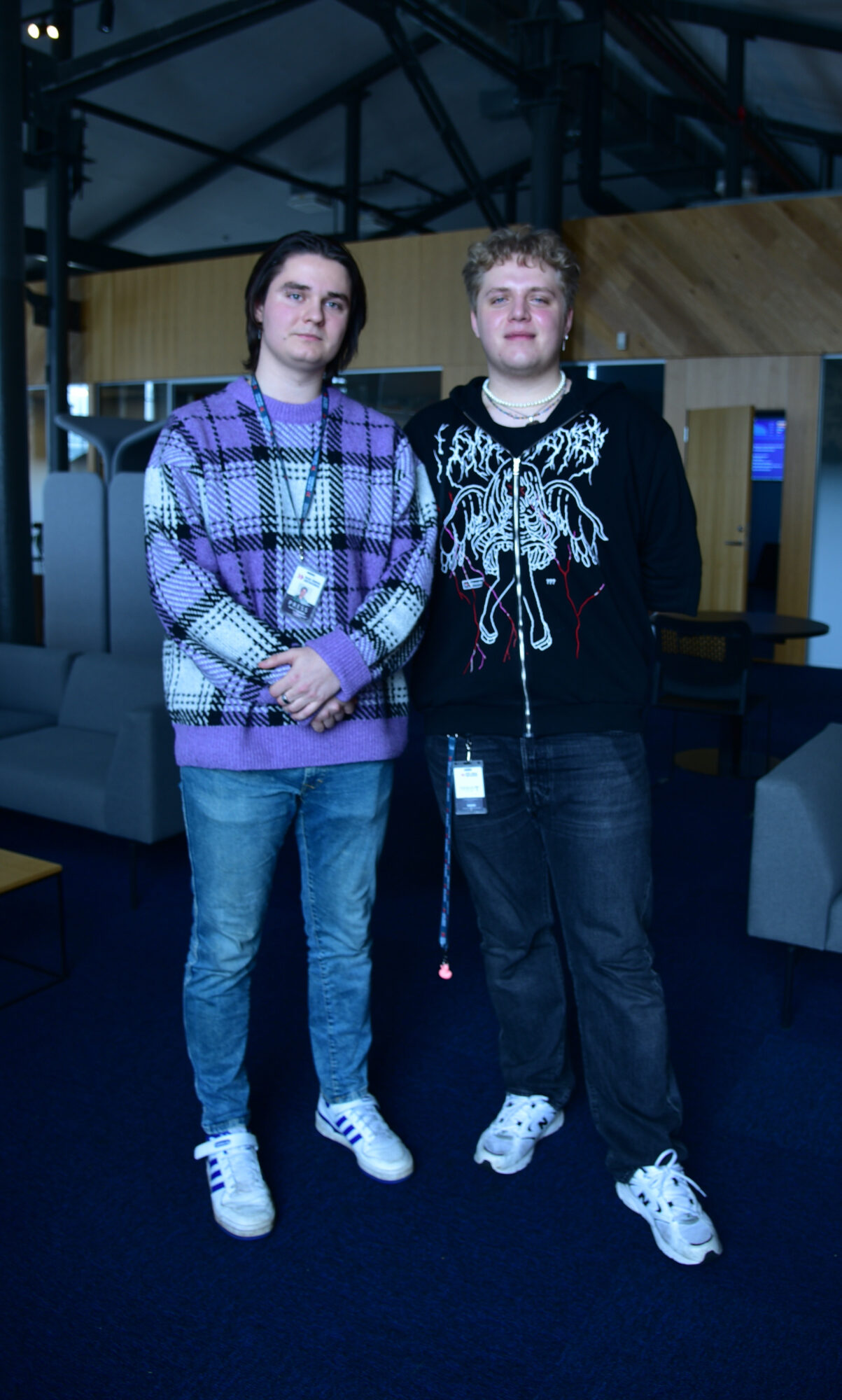
Ponkratov said Estonia’s laws protecting journalists — combined with a pluralistic political system in which American-style media polarization is much less likely — is what allows press freedom to flourish. Andresson, pulling on a vape, added that Estonian schools often incorporate media literacy into their curricula, offering workshops on fact-checking and sourcing.
Ponkratov predicts that the bans on Russian outlets will eventually be lifted so that state-sponsored Russian outlets can compete with Estonian ones. Andresson agreed. “If we would like to make new media for the Russians, with opinions and news, it will be very hard work,” Andresson said. “If we’re gonna have back the banned channels and sources, it will take a very long time to get used to having those back.”
Debates over acceptable levels of Russian influence make their way out of the media bubble and into society at large, too. In August of last year, the government removed a Soviet-era tank from the Russian border city of Narva. The monument was one of several that were taken down in quick succession, prompting criticism from locals (more than 90% of Narva’s residents speak Russian) and cyberattacks from Kremlin-friendly hackers. Ponkratov covered the removal, adding that both Estonians in Narva and Russian state media channels targeted him and his fellow journalists for being “paid actors.”
“[Narva residents] showed signs of anger, telling us we were against the people of Estonia,” Ponkratov said. “That we were pro-government, pro-European, against Estonia. Doing something wrong.”
At a corner café in Tallinn, Inga Spriņģe wore magenta lipstick, her bronze hair pulled back in a low bun. She spoke in hushed tones, as if we were being watched. Spriņģe is the co-founder of Re:Baltica, an international, investigative journalism nonprofit with an ambitious scope and impressive output. Coming from Riga but having lived in Estonia for the past five years following her marriage to another investigative journalist, she is deeply familiar with the three Baltic states’ media systems.
“Estonian media is in much, much better shape than in Latvia and Lithuania. First thing is because owners of leading websites in all Baltic countries are Estonian, and they have started to ask for money and subscriptions already, like, seven, 10 years ago. So Estonians are used to the fact that they need to pay for content,” she said. “It’s my feeling, and what I have seen, that there is also higher trust in media, higher trust in public institutions. It’s more like Scandinavian thinking. Latvia, Lithuania, we are in a shittier situation.”
A general unwillingness to pay for content has also plagued American media, where the nationalization and sensationalization of news — fueled by corporate consolidation and ad-driven models that reward red-faced punditry — has led to the disintegration of local outlets and plummeting trust levels in the fourth estate. But Estonian policies are not necessarily applicable to the U.S. media climate, where polarization has driven roughly half the electorate to Fox News, and where more and more people avoid current events altogether each year.

For the most part, trends in the media industry at large apply to Estonia, especially (but unsurprisingly, given its reputation as a “digital society”) a shift toward online subscription models. But the landscape is also sparse and oligopolistic. Just two companies dominate the scene: Ekspress Grupp, which owns Delfi, and Postimees Grupp. A 2016 report from the Centre for Media Pluralism and Media Freedom described Estonia’s media ownership concentration risk as “high,” at 88%, because of its smaller market and homogenous news offerings.
There are also laws against the disclosure of certain kinds of information that taint, if only slightly, its picture-perfect press freedom status. Last year, two journalists were fined for publishing pre-trial facts on a criminal case without the prosecutor’s permission. The Estonian Supreme Court later found the fines to be unjustified, but the incident drew widespread attention and criticism from international media groups. Estonian journalists are quick to point out their country’s faults, and that the RSF index — though it can be a useful tool — doesn’t paint a very nuanced portrait of where press freedom really stands between and within countries.
Kharchenko, however, doesn’t think much about these shortcomings. He’s too busy doing Russian voice-overs for Joe Biden, or writing jokes into his segments, or calling adherents of Putin’s propaganda — who use the letter “Z” in service of his lies — “zombies.”
“When I came to ETV+ … some things are the same, but only professional things. Most things are different. In Estonia, everything is much, much, much better. Now I feel that I’m working in the right place,” he said. “It’s the best job that I ever had.”
~04.18.2023